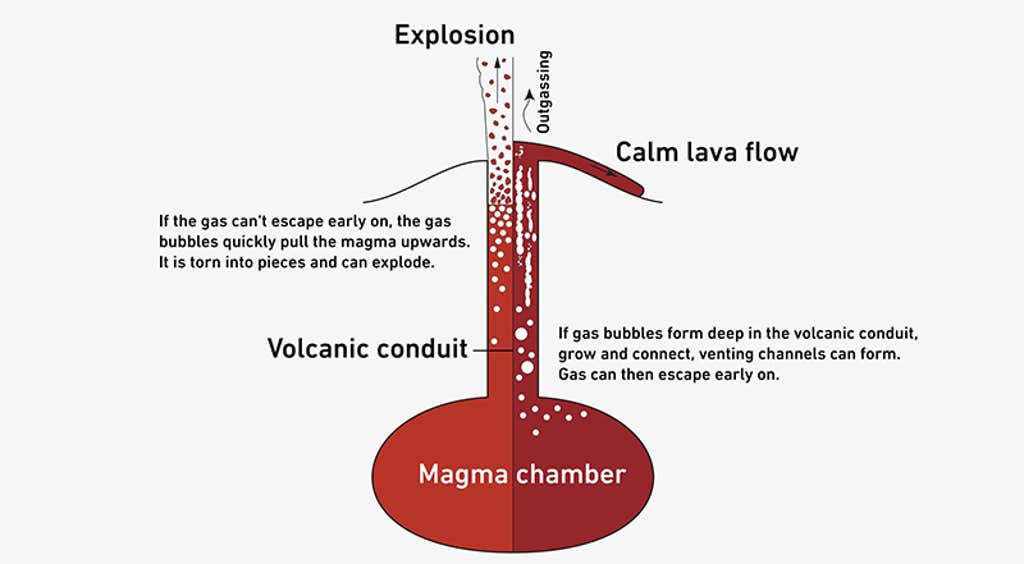Scientists studying volcanoes have long thought that rising magma rich in gas bubbles should quickly zip to the top of a volcano and erupt.
But famous eruptions, like Chile’s Quizapu and Mount St. Helens in Washington state, haven’t fit this mold. Between 1846 and 1847, Quizapu gently unloaded one of South America’s largest lava flows ever documented, leaving behind piles of rock spanning some 20 square miles.
And months before Mount St. Helens erupted for nine hours in 1980, something strange happened: Lava chock-full of gas and seemingly primed to quickly explode instead leisurely flowed inside the volcano’s cone. A massive blast was only triggered when an earthquake and resulting avalanche struck, causing the north face of the mountain to crumble. (This freed pressurized gases within the volcano, prompting magma from below the surface to surge upward and spew into the air.)
Now, researchers say they have identified a pressure release valve of sorts that enables a sluggish escape of thick, gas-rich lava, according to a paper published in the journal Science.

Gas bubbles have been thought to pop up as magma rises in volcanoes, and the ambient pressure decreases—like popping open a bottle of champagne, the bubbles speedily shepherd the sizzling magma stew toward explosion.
But, in some cases, bubbles might form within a tube-like channel called the conduit, in which magma surges up from an underground reservoir before it’s released as lava. When emerging deep within the conduit, these bubbles can merge and form channels for gas to escape before pressure mounts.
“We can therefore explain why some viscous magmas flow out gently instead of exploding, despite their high gas content—a riddle that’s been puzzling us for a long time,” said study co-author Olivier Bachmann, a volcanologist at ETH Zürich in Switzerland, in a statement.
Read more: “The Sound So Loud That It Circled the Earth Four Times”
This early bubbling occurs thanks to shear forces. The process can be compared to stirring honey. At the jar’s edge, more friction causes the honey to move more slowly than the sweet liquid in the center. Likewise, the friction in a volcano’s conduit is higher along the edge than in the center. “This essentially ‘kneads’ the molten rock, producing bubbles of gas” deep in the conduit, according to the statement.
The team of scientists identified this phenomenon when modeling volcanic activity in the lab by saturating a thick liquid that mimics molten rock with carbon dioxide gas, then applying shear forces to this substance.
Now, Bachmann hopes that volcano models will better incorporate shear forces, helping to paint a clearer picture of volcanoes’ potential perils. ![]()
Enjoying Nautilus? Subscribe to our free newsletter.
Lead image: Aaron Rutten / Shutterstock
































